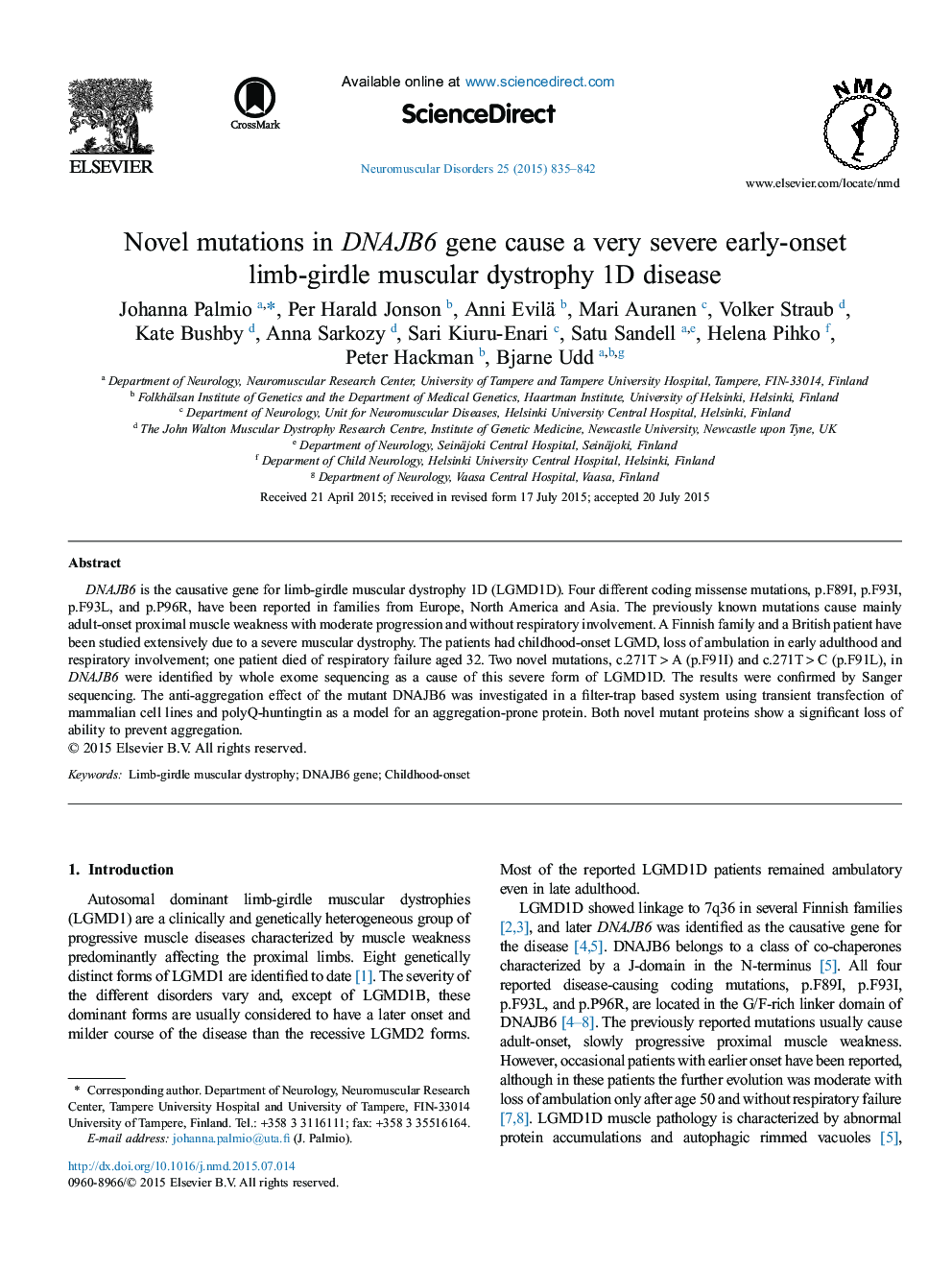| Article ID | Journal | Published Year | Pages | File Type |
|---|---|---|---|---|
| 3078824 | Neuromuscular Disorders | 2015 | 8 Pages |
•Five patients with severe early-onset LGMD and respiratory insufficiency were described.•Two novel mutations in DNAJB6 were identified as causes of very severe form of LGMD1D.•There is indication of more reduced anti-aggregation capacity of the new mutations.
DNAJB6 is the causative gene for limb-girdle muscular dystrophy 1D (LGMD1D). Four different coding missense mutations, p.F89I, p.F93I, p.F93L, and p.P96R, have been reported in families from Europe, North America and Asia. The previously known mutations cause mainly adult-onset proximal muscle weakness with moderate progression and without respiratory involvement. A Finnish family and a British patient have been studied extensively due to a severe muscular dystrophy. The patients had childhood-onset LGMD, loss of ambulation in early adulthood and respiratory involvement; one patient died of respiratory failure aged 32. Two novel mutations, c.271T > A (p.F91I) and c.271T > C (p.F91L), in DNAJB6 were identified by whole exome sequencing as a cause of this severe form of LGMD1D. The results were confirmed by Sanger sequencing. The anti-aggregation effect of the mutant DNAJB6 was investigated in a filter-trap based system using transient transfection of mammalian cell lines and polyQ-huntingtin as a model for an aggregation-prone protein. Both novel mutant proteins show a significant loss of ability to prevent aggregation.
